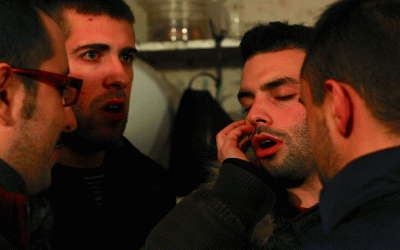Date: Thursday November 17, 2016
Time and Location:
2:00-3:30pm, Waters Room, Zimmerman Library
Lecture Title:
‘Sol y Sombra’: Music in Images in the Arts of New Spain
Description:
Scenes depicting musicians performing are found in a range of colonial art forms. Here, I briefly explore religious music from the 16th century through an examination of mission design and manuscript illuminations, and secular or profane music from the 18th century represented in genre paintings, domestic spaces, and biombos.
Biography:
Ray Hernández-Durán completed his Ph.D. in Art History at the University of Chicago. His courses cover Spanish Colonial Art and Architecture, Baroque Art, and African Art. He has articles in academic journals, including Nineteenth-Century Studies and Nineteenth-Century Art Worldwide; essays in edited volumes, such as, Buen Gusto and Classicism in the Visual Cultures of Latin America (1780–1910), Woman and Art in Early Modern Latin America, and Hacia otra historia del arte en México. His book, The Academy of San Carlos and Mexican Art History: Politics, History, and Art in Nineteenth-Century Mexico (Routledge) will be out in November 2016.
Snapshot
A Collaborative program featuring both student and faulty from the departments of Music and Theatre & Dance.
Dr. Ana R. Alonso-Minutti Releases Book of Co-Edited Collection of Essays
A Book Presentation & Signing event for Dr. Alonso-Minutti co-edited collection of essays, Experimentalisms in Practice: Music Perspectives in Latin America, published by Oxford University Press earlier this year, at the UNM Bookstore.
Cuncordu Sas Bator Colonnas perform at Outpost
Sas Bator Colonnas is a multipart singing group from the Scano di Montiferro, a mountainous region in central Sardinia, Italy. Antioco Milia, Antonio Carboni, Stefano Desogos and Francesco Fodde started singing together in 2002, carrying on the vernacularmultipart singing practice, one of the most representative cultural forms of their village and their island, which is performed by four male singers and called cuncordu.




